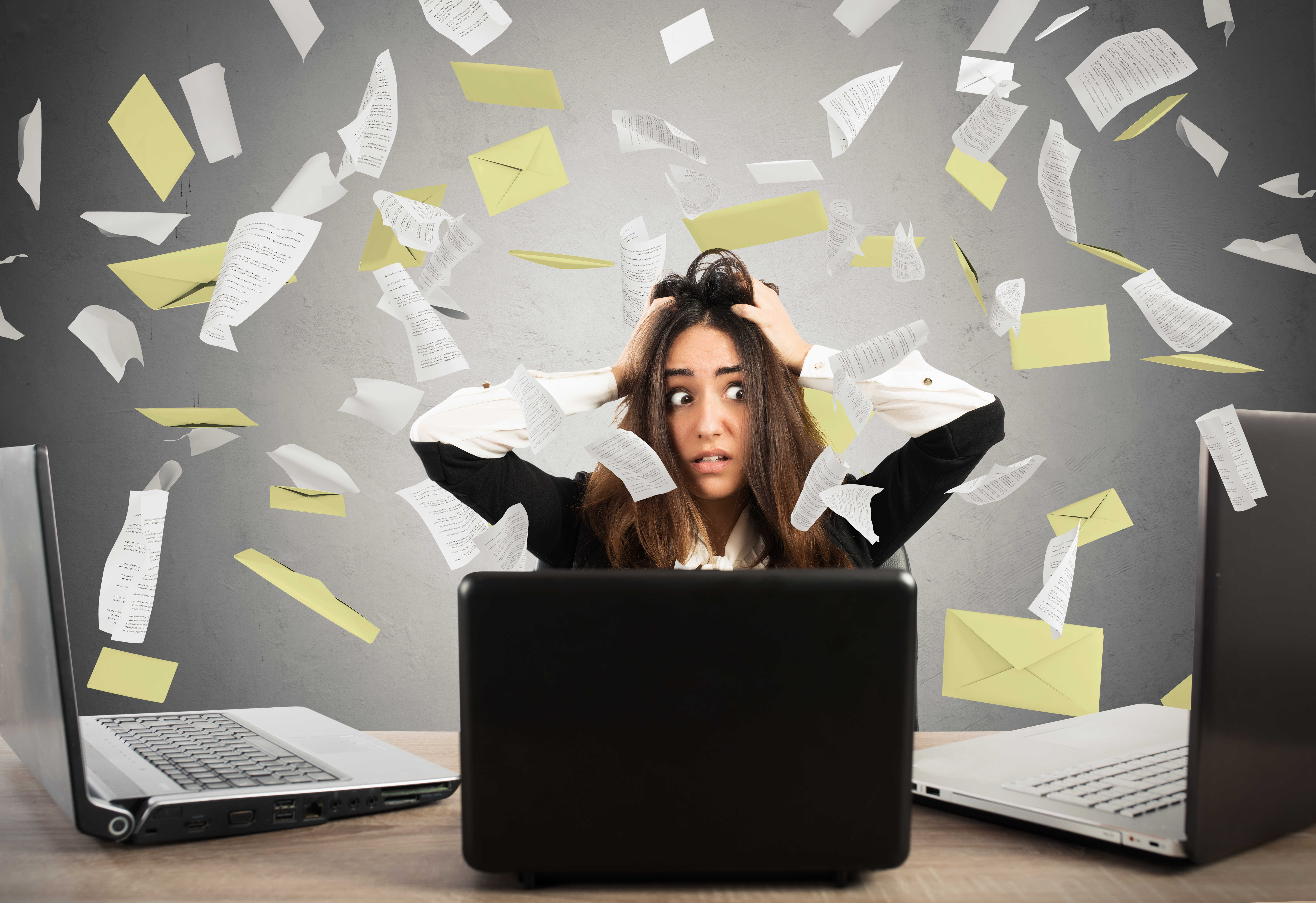Using Mindfulness Practices in Everyday Action

How many ways can someone get in contact with you? I can get an email, a text message, correspondence in the mail, a Facebook message, an Instagram PM, a Tweet, a LinkedIn notification, a Slack team message, a snapchat, a WhatsApp, a phone call, a written note, a fax, or someone can come and knock at my door and talk to me face-to-face. We are inundated with information and are constantly sifting through it all to find the nuggets of importance.
Mindfulness training allows us to choose what we want to give our attention to. It teaches us to focus on what we choose and thus become more productive. However, when our attention is hijacked by the constant stream of information, it depletes our ability to focus. At a recent training, some clients mentioned that email was one of their biggest concerns.
Respond Vs. React
Mindfulness training teaches us how to take a breath and respond instead of automatically react. When sending an email, we must recognize that a person will be reading on the other end of the screen. The words we write, although they seem to be in a void, are read by other humans … humans who might be missing your tone, facial cues and/or body language. Writing a “mindful” email takes longer than simply reacting with your initial thoughts. Think of who you are responding to and ask yourself, is this true, necessary, and kind?
It is also important to decide whether email is the best form of contact to use. K. Allisson Yu, the National Executive Lead of Principal Gifts at the American Heart Association, recognizes that email is essential in managing a business and it can be unintentionally used as a quick mode of communication that is not appropriate for certain circumstances. “Potentially sensitive situations or topics should always be addressed in person or voice-to-voice at a minimum; emails can be easily misinterpreted.” Before writing the email, decide if an email is the best form of contact.
Boundaries
When do you check your email, how often do you check it? According to a 2018 Adobe Consumer Email Survey, 49% of people check work emails every couple of hours outside of normal work hours. While 18% never check their work emails outside of work, 13% check it multiple times each hour, and 11% check it constantly.
Do you place any boundaries for yourself regarding work email? Mindfulness teaches us to focus on what we choose. Whether you need boundaries from work email or not is completely and entirely up to you. I have spoken to people who say they need to turn it off when they are home, and I also know people who are not bothered by responding to email from home outside of work hours. The choice is yours. Become aware of your needs and make a mindful choice as to when you respond to email so it works with your lifestyle.
One thing to follow regarding email is to avoid responding or sending email first thing in the morning. According to Rasmus Hougard, author of One Second Ahead: Enhance Your Performance at Work with Mindfulness, our brain is more alert, focused and creative in the first half of the morning. Responding to email as your first task wastes the time when your brain has the highest potential. Instead, use the morning to bring focus and attention to tasks that will produce the greatest outcomes. When we are overwhelmed with information and distractions, we tend to jump to whatever feels most pressing at the moment. We are busy, but not necessarily effective. Our urge is to act, to do something, and responding to email makes us feel productive. By rejecting the noise of information and prioritizing our tasks, however, we make better use of our morning mental clarity.
Email Challenge
Check your work email twice a day:
- Set two times a day that you will check and respond to email. Usually, an a.m. and p.m. time work great, like 10 a.m. and 4 p.m.
- Set an auto-response letting your senders know you have a designated time to respond to email and, if it is an urgent matter, to contact you in another manner.
- When sending email, avoid scanning for anything new and commit to checking your email at your scheduled time.
- When your designated email check time occurs, bring your attention to the emails and respond in one of three ways:
- Delete or archive the message.
- Respond to anything that will take less than two minutes to respond to.
- Any email that requires more than two minutes to respond, place in a task or to-do folder and schedule when you will take the time to fully respond. Let the recipient know when they should expect your full response.
Let me know how this email challenge works (or completely doesn’t work) for you. Notice whether you are more productive and less distracted by email and adjust your life and schedule accordingly. Ultimately, focus on what you choose and choose your distractions mindfully.
Natalia Foote is the owner of threeR, a company bringing mindfulness, meditation and yoga practices to the workplace. Her mission in life is spreading love and light in the world. When not spending time with her family, you can find Natalia taking and teaching yoga all around Lake Nona.


